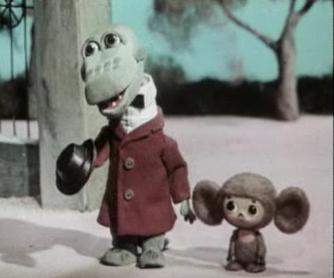Russian Cartoons Return to Cuba (2)
Regina Cano

Likewise, we used to get Russian literature, books like The Story of a Real Man by Boris Polevoy, Dinka by Oseeva, Yury Olesha’s The Three Fat Men,” or Ostrovsky’s “How the Steel Was Forged.” At the end of the ‘80s we even got the renowned The Master and Margarita by Mikhail Bulgakov, who has come out with a sequel (a very good one) that surprised many of us since they published an edition here in Cuba.
The “Russian” cinema brought us works of another taste and making, with movies by directors like Tarkovsky or Andrzej Wajda. The latter was actually Polish, but both were unforgettable.
In the theater on the island, Stanislavski has left a still visible imprint.
Then too, the thoughtful pedagogy of Anton Makarenko appeared here at the beginning of the revolution, but later he was never mentioned again.
We would get publications like Sputnik, New Times, and News from Moscow (the newspaper), as well as magazines like GDR and Soviet Woman (which kids and parents would get ahold of to make covers for the children’s school notebooks).
We would call Russians “los bolos” (bowling balls), firstly because they were built kind of round, but also because the products we received from there were never flimsy, but solid – and extremely durable.
Thanks to that characteristic we still have home appliances, industrial equipment and handmade articles manufactured by our Soviet comrades, items that survived the crisis of the 90’s.
The Russians who lived in the Alamar community are remembered for their sales of products that only turned up in their markets. I think back to how when the foreign technicians would go to work, the housewives opened for business.
Thousands of Cubans went to “Russia” (the USSR) with many coming back with spouses and later having children. This was how there came into being the palaviny (literally “halves”), who now feel themselves in the middle of two cultures, because Cubans still consider them “bolos” and the Russians don’t give them the time of day.
I remember that during the most difficult part of the ‘90s crisis (when fortunately friends still existed) it was common to get together and — given the shortages of everything — we would let our memories run wild. One time, when that conversation went back into the epoch of the Russians, someone asked:
“… and do you remember the pickled cucumbers, the apples and pears, the strawberry jam, and the milk jelly that your mother would bring home while carrying your little brother? And what about the soups, the apple preserves, the Albanian sherry, the red wine and lemon vodka, or the Bulgarian wine and the white wine?”
Nowadays you’ll come home to where there’s a computer or a DVD and someone will say to you with the greatest contentment: “Hey look! I have some Russian cartoons. Do you want to watch?”
That was what filled our childhood and adolescence, and though at some point in time we turned our backs on all of it, there are still moments when the nostalgia reappears.





